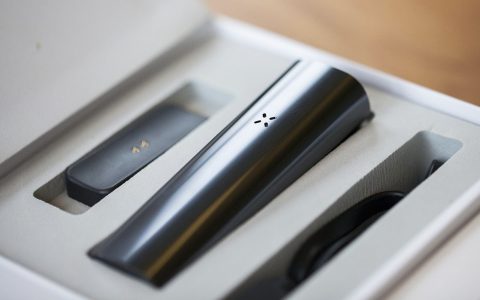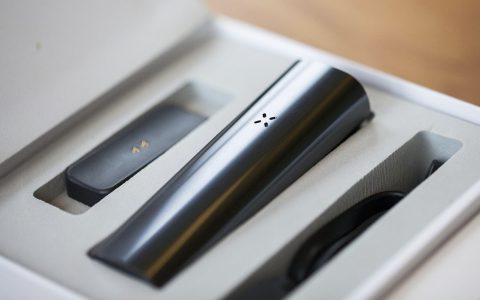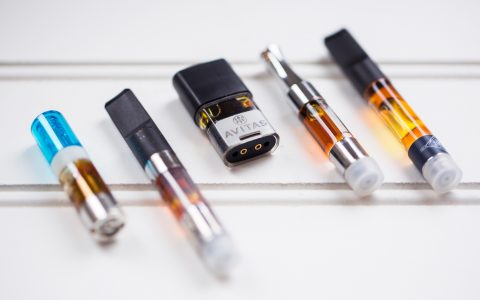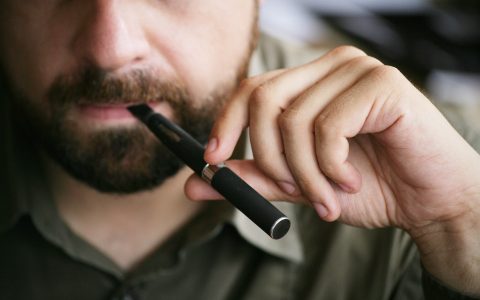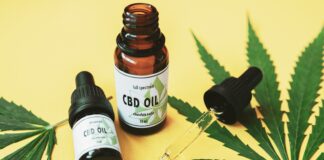Cannabis vaporizers and pre-packaged cartridges continue to grow in popularity, with sales estimated to grow nearly 50% from 2017 to 2018. Vaping delivers a different experience than smoking a joint, but it’s not easy to quantify that difference. Recently, though, scientists have looked into the question and found that vaping actually packs a more powerful punch than the traditional joint.
Tory Spindle, postdoctoral fellow, John Hopkins University
According to a recent JAMA study that examined cannabis consumption in infrequent consumers, people who vaporized cannabis flower experienced more pronounced effects than those who smoked the same dose. What’s more, effects increased along with the dose administered, suggesting that vaporized flower should be approached with more conservative dosing than any other consumption method, especially for infrequent consumers.
While the lead author acknowledged that the study has some limitations, he echoed its conclusions in an interview with Leafly: “It was surprising, the magnitude of difference between equal doses of smoking versus vaping,” said Tory Spindle, a postdoctoral fellow with John Hopkins University’s Bayview Medical Center. Vaping “can produce drastically different impairment” for all consumers, he said.
More Efficient THC Delivery
Previous studies have shown that vaping is a more efficient THC delivery method than smoking, so researchers sought to examine its impacts on several outcomes at two doses and to compare these results with both smoking the same doses and consuming placebo doses of a THC-free substance. Researchers conducted the study between June 2016-January 2017 at Hopkins’ Behavioral Pharmacology Research Unit.
The population studied was made up of nine men and eight women with a mean age of 27.3 who were prescreened for cannabis and other drug use beforehand to confirm they all had gone an average of 13 months without consuming cannabis before the study.
Additionally, researchers assessed the participants before they consumed cannabis and then at 10 points afterwards up to 8 hours after they had consumed each of the six study doses (three vaping and three smoking) and each dose was measured to ensure consistency and with participants blinded to the amount they were using.
“We were able to control dosing better across the two conditions,” Spindle said, noting that this was likely why the study yielded different results. This research method allowing for titrated doses, or more carefully-calculated individual doses, which has been difficult to achieve in much of the past research on this subject.
Measuring Vaporized Flower’s Effects
When it came to measuring the cannabis affects, researchers applied the Drug Effect Questionnaire and three computerized tasks, The Digit Symbol Substitution Task, Divided Attention Task and Paced Auditory Serial Addition Task. These tasks were chosen because they “previously demonstrated to be acutely influenced by cannabis self-administration and representative of workplace performance and/or operation of a motor vehicle.”
Researchers tested subjects vaping flower, not cannabis oil. So there’s more work to be done.
Comparing 17 participants’ outcomes across vaping and smoking, researchers found statistically significant differences at a 25-mg THC dose. With vaping, consumers experienced more adverse effects, or “pronounced impairment of cognitive and psychomotor ability,” determined by their performances on the computer tests. Consumers that vaped also experienced more paranoia and anxiety than their smoking peers.
The results were similar at a lower dose as well. At 10 mg THC, vaporized cannabis flower “modestly” harmed cognitive functioning and yielded significant differences with smoking, as measured by mean drug effect scores.
“For both inhalation methods, mean peak changes for ratings of drug effect at the 10-mg and 25-mg doses were significantly greater than placebo,” the researchers also found. “Significant, sometimes adverse, drug effects can occur at relatively low THC doses in infrequent cannabis users,” they wrote, “and accordingly, these data should be considered with regard to regulation of retail cannabis products and education for individuals initiating cannabis use.”
What This Means for Consumers
The cannabis administered in the study contained 13% THC (as well as 0.03% CBD and 0.8% cannabinol), according to Spindle, which says a lot about how infrequent users and especially new medical cannabis patients should dose themselves if they choose to vape. Keeping in mind too that cannabis products available at dispensaries are usually more THC-rich than these research doses.
As for regular cannabis consumers with a high tolerance to THC, the results cannot be extrapolated, one of a few limitations in the study. Other limitations included using a range of only three doses and one strain of cannabis (which was low in CBD, Spindle noted), and using only flower and a single vaporizer type (the Volcano Medic) for the vaping portion, and a small pipe for the smoking research. Researchers did not examine the effects of vaping liquid cannabis or using other vaping instruments.
“This is one vaporizer and we need to do more research,” Spindle said. “Definitely more studies are needed to see if these effects are applicable across other types of variables.”
Need to Test More Variables
That idea was echoed in the research, which stated that more controlled studies of a variety of vaporizing and smoking methods are “vital” and “may inform dosing guidelines, cannabis policy and regulation, and procedures for detecting acute cannabis intoxication.”
In addition, the corresponding author for this study, Ryan Vandrey, said, “We still don’t have a full look at the long-term effects of vaping, such as whether there is a risk for chronic bronchitis, and more work needs to be done on that front,” according to a news release issued by the Hopkins School of Medicine (where Vandrey is an associate professor of psychiatry and behavioral sciences).
On the other hand, some results from previous studies were echoed in this John Hopkins study, like, for instance, researchers did not find strong correlations between results and THC blood concentration.
“THC doesn’t stay in the blood that long,” Spindle said, cautioning: Blood concentration levels “can go back to baseline before you’re done feeling the effects.”
Collectively, the findings from this study and others indicate yet again that blood THC concentrations are not a valid indicator of a cannabis consumer’s intoxication and/or impairment, and that it’s a much more complex issue than once assumed.
As the study concluded: “It highlights the need to explore other biological and behavioral means of detecting acute cannabis impairment.”


